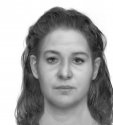Unsolved Jane Doe murder case reopened using rootless hair DNA
Old evidence and new technology is providing clues to help crack a decades-old cold case where both the killer and the victim have never been identified. In 1985, a woman, now called Jane Doe, was found shot and killed in the remote wetlands area off Mowry Avenue in Newark. To this day, no one knows who she is.
NEWARK, Calif. - Old evidence and new technology is providing clues to help crack a decades-old cold case where both the killer and the victim have never been identified.
In 1985, a woman, now called Jane Doe, was found shot and killed in the remote wetlands area off Mowry Avenue in
Newark. Detectives said two hunters discovered the decomposed and nearly unrecognizable body and called police.
To this day, no one knows her name or who she is.
"Unfortunately, nobody knows or knew that Jane Doe existed," Detective Todd Nobbe said. "There was no identification, no purse found, nothing that would immediately give us a name."
Nobbe reopened the case a few years ago. While the woman’s body was cremated, Polaroid photos were taken of her skull along with a clump of rootless hair, both of which remained in the evidence file.
It first led the detective to
Astrea Forensics in Santa Cruz where scientists now have the ability to break down and extract DNA from even the tiniest strands.
They say advanced computers are used to find patterns and sequence the DNA. And from there, profiles are built to create a sort of roadmap.
Those DNA profiles are then passed to genealogists who are tasked with trying to tie DNA matches to specific people.
Newark Police Department partnered with nonprofit
DNA Doe Project, which builds and uses that genetic information to identify John and Jane Does.
"Our job is to build out their family trees and look for connections between those family trees," Cairenn Binder with
DNA Doe Project said. "From there, we build back down the family tree to try to find a John or Jane Doe that is consistent with the age and location that we know our Doe to be from."
Volunteers have
solved dozens of unidentified persons cases across the country using genetic genealogy. The same methods were used to find the
Golden State Killer, uploading DNA to online tools that help pinpoint common segments of DNA leading to a specific ancestor.
"They helped lead me down that path of who the moth of our Jane Doe might be," Nobbe said.
However, that potential mother, Marian Marie Richardson, of a small town in Missouri near the Kansas border, is no longer living. Interviews with family members did not provide any connections to California. Instead, Nobbe said they pointed to a distant relative in Texas and a woman named Ruth Ellis, who may be related to Jane Doe.
more at link:









